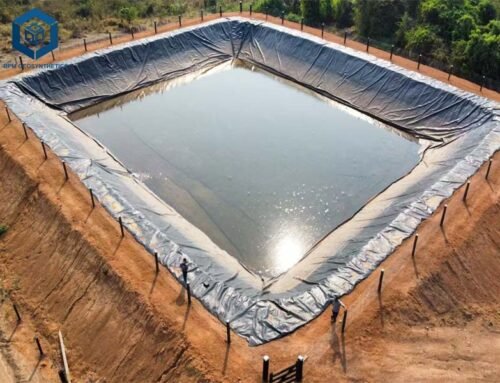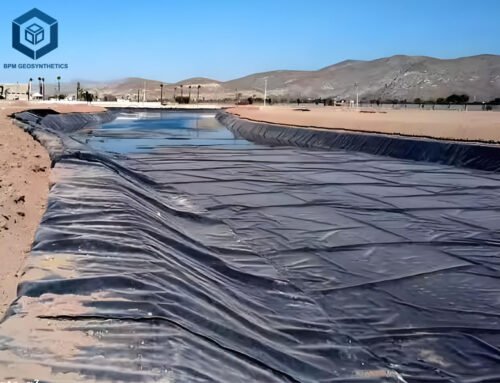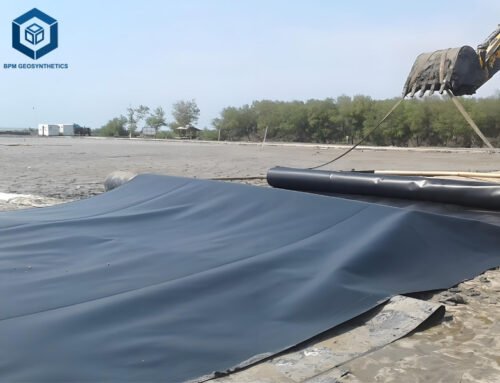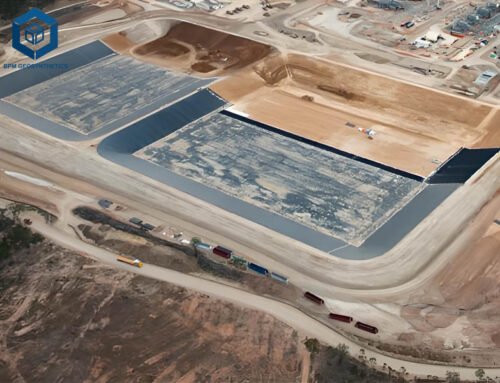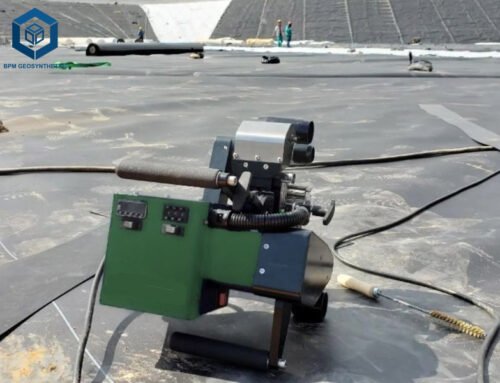Creating a pond, whether for aesthetic, ecological, or functional purposes, requires careful consideration of water containment. A critical component in this process is the pond liner, which ensures water retention and structural integrity. Among the various types of pond liners, preformed pond liner stand out for their ease of use and suitability for specific applications. This comprehensive guide explores what preformed pond liners are, their specifications, advantages, disadvantages, applications, and key considerations for selection. By providing detailed insights and data-driven analysis, we aim to equip readers with the knowledge needed to make informed decisions for their pond projects.
1. What Is a Preformed Pond Liner?
A preformed pond liner is a rigid or semi-rigid, factory-molded structure designed to hold water in a pond. Unlike geomembrane liners, which are adaptable to any shape, preformed liners come in predetermined sizes and shapes, typically manufactured from materials like high-density polyethylene (HDPE), fiberglass, or reinforced plastics. These liners are essentially “ready-to-install” shells that fit into an excavated hole, offering a quick and straightforward solution for small to medium-sized ponds.
Preformed pond liners are popular among DIY enthusiasts and homeowners due to their ease of installation and defined aesthetic. They are commonly used in backyard water gardens, ornamental ponds, and small fish ponds, where customization is less critical than simplicity. According to industry data, preformed liners account for approximately 15–20% of the pond liner market, with flexible liners dominating due to their versatility.
How Preformed Pond Liners Differ from Flexible Liners
To understand preformed liners, it’s helpful to compare them with flexible liners, such as EPDM (Ethylene Propylene Diene Monomer) or RPE (Reinforced Polyethylene). Flexible liners are sold in rolls and can be cut and shaped to fit any pond design, offering high customization. In contrast, preformed liners are rigid or semi-rigid, with fixed dimensions and contours, limiting design flexibility but simplifying installation. For example, a preformed liner might have a capacity of 50–400 gallons, while flexible liners can accommodate ponds up to 60,000 square feet.
Types of Preformed Pond Liners
Preformed pond liners are categorized based on material and construction:
- HDPE (High-Density Polyethylene): HDPE Preformed Pond Liner – Lightweight, affordable, and durable, but prone to cracking in freeze-thaw climates if not fully supported.
- Fiberglass: Highly rigid, UV-resistant, and capable of freestanding installation, ideal for above-ground or large ponds. Fiberglass liners are heavier and costlier.
- Box-Welded Flexible Liners: Made from flexible materials like polypropylene, heat-welded into 3D shapes. These offer a balance between rigidity and flexibility, suitable for custom installations.
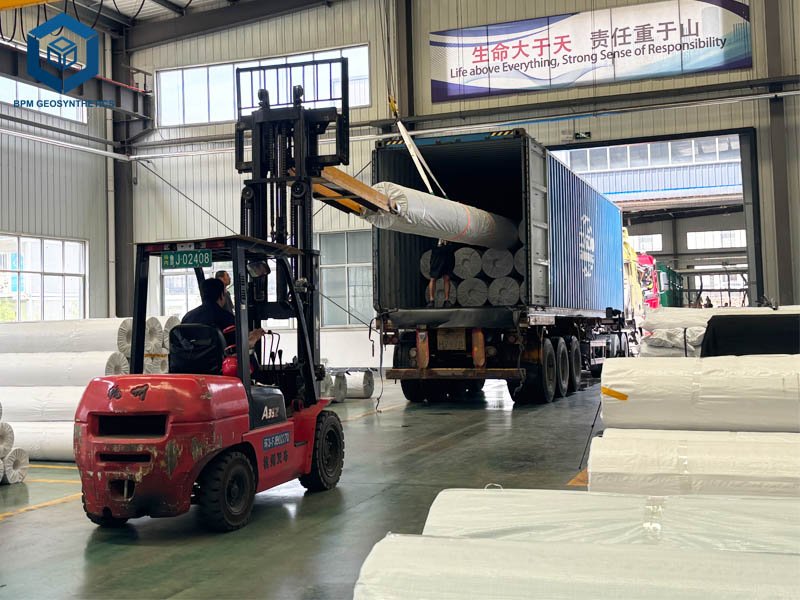
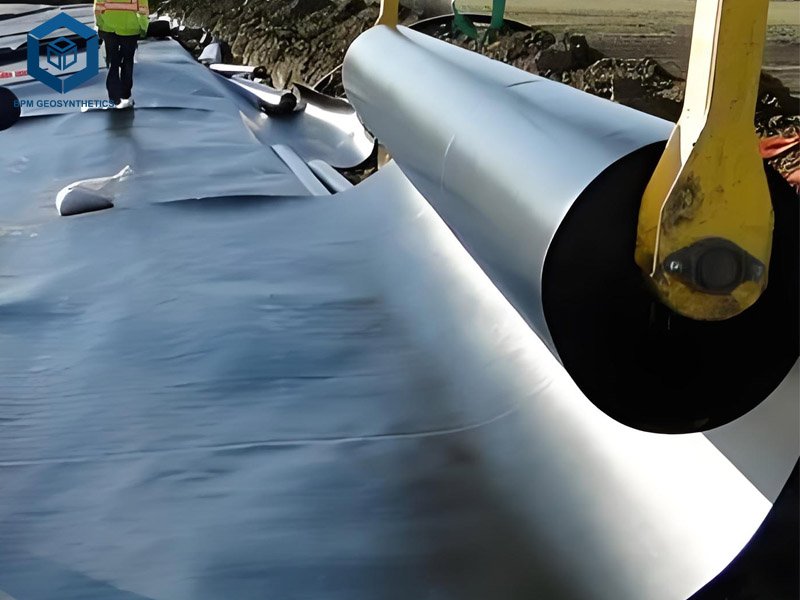
2. Key Specifications of Preformed Pond Liner
Understanding the technical specifications of preformed pond liners is essential for selecting the right product. Below is a detailed overview of their parameters, compiled from industry sources like Western Environmental Liner and The Home Depot.
2.1 Preformed Pond Liner – Material Composition
- HDPE: Density of 0.94–0.96 g/cm³, offering good chemical resistance but moderate UV stability.
- Fiberglass: Reinforced with glass fibers, providing high tensile strength (up to 3,000 MPa) and UV resistance.
- Box-Welded Polypropylene: 45 mil thickness, fish-safe, and NSF-61 certified for drinking water applications.
2.2 Preformed Pond Liner – Dimensions and Capacity
- Size Range: Common sizes include 2.1 ft x 2.75 ft (9 gallons) to 5.91 ft x 4.83 ft (125 gallons). Larger custom fiberglass liners, like the Giant LAKE KOI Fiberglass Pond, can hold up to 2,150 gallons.
- Depth: Typically 18–24 inches, with some fiberglass models reaching 3–4 feet. Shallow depths limit suitability for koi ponds, which require 4–6 feet for temperature regulation.
- Weight: HDPE liners weigh 4–10 pounds, while fiberglass liners can exceed 50 pounds for large models.
2.3 Preformed Pond Liner – Performance Parameters
- Puncture Resistance: Fiberglass offers superior resistance (up to 2x HDPE), while box-welded liners are comparable to flexible RPE (2–3x EPDM).
- Lifespan: HDPE lasts 5–10 years, fiberglass 20–30 years, and box-welded polypropylene up to 20 years with UV protection.
- Temperature Tolerance: HDPE withstands -40°C to 60°C, fiberglass -50°C to 80°C, but HDPE may crack in freeze-thaw conditions.
- Cost: HDPE liners cost $25–$150, fiberglass $200–$600, and box-welded liners $0.75–$3.00 per square foot.
2.4 Preformed Pond Liner – Additional Features
- UV Resistance: Fiberglass and box-welded liners have excellent UV stability, while HDPE requires soil or rock coverage to prevent degradation.
- Fish and Plant Safety: Box-welded polypropylene and select fiberglass liners are NSF-61 certified, ensuring no harmful chemical leaching. HDPE is generally safe but less reliable for long-term fish health.
- Installation Requirements: HDPE requires full ground confinement, while fiberglass can be freestanding. Box-welded liners need a frame or ground support.
3. Functions of Preformed Pond Liner
Preformed pond liners serve multiple functions that ensure the functionality and longevity of a pond. Below are their primary roles, supported by practical examples.
3.1 Preformed Pond Liner – Water Containment
Preformed liners create a watertight barrier, preventing water loss through seepage. For a 125-gallon HDPE liner, water retention efficiency is near 100%, reducing refilling costs by $50–$200 annually compared to unlined ponds.
3.2 Preformed Pond Liner – Structural Support
The rigid or semi-rigid design maintains the pond’s shape, especially for above-ground or freestanding fiberglass installations. This eliminates the need for extensive excavation or reinforcement, saving up to 20% in labor costs.
3.3 Preformed Pond Liner – Aesthetic Consistency
Preformed liners eliminate folds and creases common in flexible liners, providing a clean, professional look. For example, a fiberglass liner in a 100-gallon pond creates smooth contours, enhancing visual appeal.
3.4 Preformed Pond Liner – Protection Against Environmental Damage
Liners protect the pond base from root intrusion and soil erosion. Fiberglass liners, with tensile strength up to 3,000 MPa, resist damage from sharp objects, extending pond life by 10–15 years.
3.5 Preformed Pond Liner – Simplified Maintenance
The smooth surfaces of preformed liners reduce debris buildup, lowering cleaning frequency. A 2023 study by Charlotte Backyard Ponds found that preformed liners require 30% less maintenance time than flexible liners for small ponds.
4. Advantages of Preformed Pond Liner
Preformed pond liners offer several benefits, making them a popular choice for specific applications. Below are the key advantages, backed by data.
4.1 Ease of Installation
Preformed liners require minimal excavation and shaping, reducing installation time by 40–50% compared to flexible liners. A 50-gallon HDPE liner can be installed in 1–2 hours by a DIY enthusiast.
4.2 Defined Shape and Size
The fixed design ensures consistent pond dimensions, ideal for small, pre-planned water features. This eliminates the need for complex calculations, saving up to $100 in planning costs.
4.3 Durability (Fiberglass)
Fiberglass liners withstand harsh weather and physical stress, with a lifespan of 20–30 years. They are 2x more puncture-resistant than HDPE, reducing repair costs by $200–$500 over their lifetime.
4.4 Aesthetic Appeal
The absence of folds creates a polished look, increasing property value by 5–10% for landscaped ponds, according to real estate studies.
4.5 Cost-Effective for Small Ponds
HDPE liners, priced at $25–$150, are affordable for small water gardens, offering a 5–10-year solution with minimal upfront investment.
5. Disadvantages of Preformed Pond Liner
Despite their benefits, preformed pond liners have limitations that may affect their suitability for certain projects.
5.1 Limited Design Flexibility
Fixed shapes restrict customization, making preformed liners unsuitable for irregular or large ponds. Flexible liners offer 10x more design options, accommodating complex contours.
5.2 Shallow Depths
Most preformed liners have depths of 18–24 inches, inadequate for koi ponds requiring 4–6 feet. Shallow depths increase temperature fluctuations, risking fish health.
5.3 Cracking Risk (HDPE)
HDPE liners may crack in freeze-thaw climates, with a 10–15% failure rate in regions with temperatures below -10°C. Fiberglass is more resilient but costlier.
5.4 High Shipping Costs
Large fiberglass liners, weighing up to 50 pounds, incur shipping costs of $100–$300, compared to $20–$50 for flexible liners.
5.5 Limited Size Range
Preformed liners are impractical for ponds exceeding 2,150 gallons, limiting their use to small-scale applications. Flexible liners support ponds up to 60,000 square feet.
6. Applications of Preformed Pond Liners
Preformed pond liners are versatile, catering to various residential and commercial needs. Below are their primary applications, supported by real-world examples.
6.1 Backyard Water Gardens
Preformed HDPE liners (50–125 gallons) are ideal for small ornamental ponds, supporting goldfish and aquatic plants. A 2024 Home Depot review reported 4.6/5 satisfaction for MacCourt 50-gallon liners in water gardens.
6.2 Patio and Indoor Ponds
Lightweight HDPE liners (9–35 gallons) are used in patio or indoor settings, such as for Chinese water dragons. Their compact size and ease of installation make them popular for urban spaces.
6.3 Commercial Ornamental Ponds
Fiberglass liners, like the Giant LAKE KOI (2,150 gallons), are used in parks or resorts for aesthetic water features. Their durability ensures low maintenance, saving $500–$1,000 annually.
6.4 Educational Ponds
Schools and aquariums use preformed liners for small fish ponds to teach aquatic biology. Box-welded liners ensure fish safety, with NSF-61 certification for educational settings.
6.5 Temporary Water Features
HDPE liners are used for temporary ponds at events or festivals, offering quick setup and removal. Their low cost ($25–$50) makes them economical for short-term use.
7. Installation Process for Preformed Pond Liners
Proper installation is critical to maximizing the performance and lifespan of preformed pond liners. Below is a step-by-step guide, based on industry best practices.
7.1 Site Selection
Choose a level site with partial shade to control algae growth. Ensure access to electricity for pumps and filters. Avoid areas with sharp roots or rocks.
7.2 Excavation
Dig a hole 2–4 inches larger than the liner’s dimensions, matching its shape and depth. For a 50-gallon liner (4.75 ft x 2.5 ft x 1.5 ft), excavate to 5 ft x 3 ft x 1.7 ft.
7.3 Base Preparation
Lay a 2-inch sand layer to create a smooth base. Add a geotextile underlayment (e.g., non-woven polypropylene) to prevent punctures, costing $0.50–$1.00 per square foot.
7.4 Liner Placement
Place the liner in the hole, ensuring it sits level. For fiberglass liners, no backfill is needed if freestanding. For HDPE, backfill with sand around the sides to prevent flexing.
7.5 Securing and Finishing
Secure the liner’s lip with rocks or gravel, ensuring 2–3 inches protrude above soil to prevent runoff. Cover exposed areas to protect against UV damage. Install pumps and filters for water circulation.
7.6 Filling and Testing
Fill the pond with water, checking for stability and leaks. Allow 24–48 hours for settling before adding fish or plants.
8. Key Considerations When Choosing a Preformed Pond Liner
Selecting the right preformed pond liner requires evaluating project needs, environmental factors, and budget. Below are critical considerations.
8.1 Pond Size and Purpose
- Small Ponds (9–125 gallons): HDPE liners are cost-effective for water gardens or goldfish ponds.
- Medium Ponds (125–400 gallons): Fiberglass or box-welded liners support larger fish populations.
- Koi Ponds: Avoid preformed liners due to shallow depths; opt for flexible liners for 4–6 ft depths.
8.2 Material Durability
- HDPE: Suitable for mild climates but prone to cracking in cold regions.
- Fiberglass: Ideal for long-term durability and UV exposure.
- Box-Welded: Balances flexibility and strength, with fish-safe certification.
8.3 Budget
- Low Budget ($25–$150): HDPE liners offer affordability but shorter lifespans.
- Moderate Budget ($200–$600): Fiberglass provides durability for medium ponds.
- Custom Needs ($0.75–$3.00/sq ft): Box-welded liners suit specific designs.
8.4 Climate
- Freeze-Thaw Regions: Fiberglass or box-welded liners resist cracking better than HDPE.
- High UV Exposure: Cover HDPE liners or choose fiberglass for longevity.
8.5 Supplier Reliability
Select reputable suppliers like Western Environmental Liner or MacCourt, offering warranties (5–25 years) and customer support. Check reviews for quality assurance.
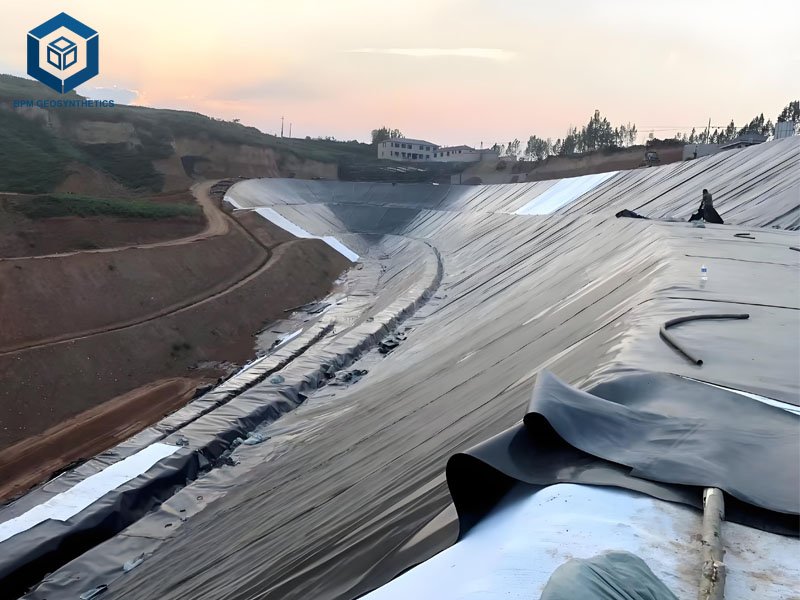
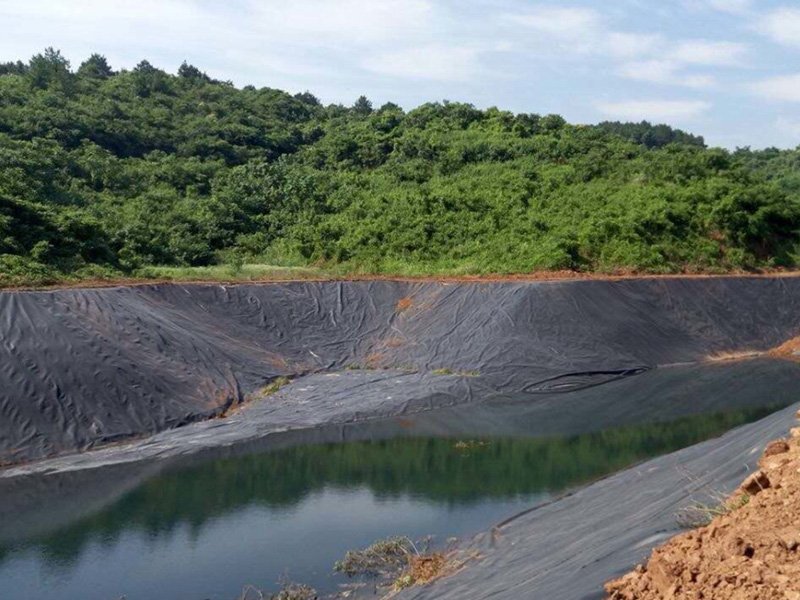
9. Comparison with Flexible Pond Liners
To provide a balanced perspective, the table below compares preformed and flexible pond liners based on key parameters.
| Parameter | Preformed Pond Liner | Flexible Pond Liner |
| Material | HDPE, Fiberglass, Box-Welded Polypropylene | EPDM, RPE, PVC, HDPE |
| Shape Flexibility | Fixed shapes and sizes | Fully customizable |
| Depth Range | 18–24 inches (up to 4 ft for fiberglass) | Unlimited (4–6 ft for koi ponds) |
| Capacity | 9–2,150 gallons | Up to 60,000 sq ft |
| Installation Time | 1–2 hours | 4–8 hours |
| Cost | $25–$600 (HDPE/Fiberglass) | $0.40–$2.00/sq ft |
| Lifespan | 5–30 years | 10–50 years |
| Puncture Resistance | Moderate (HDPE) to High (Fiberglass) | Low (PVC) to Very High (RPE) |
| Applications | Small water gardens, patio ponds | Koi ponds, large lakes, waterfalls |
Data Source: Western Environmental Liner, Everything-Ponds.com, BTL Liners.
10. Case Studies: Real-World Applications
10.1 Residential Water Garden (USA)
In 2023, a homeowner in Charlotte, NC, installed a 50-gallon MacCourt HDPE liner for a backyard water garden. The $60 liner was installed in 1.5 hours, with $20 in sand and underlayment. The pond supports goldfish and lilies, with annual maintenance costs of $50.
10.2 Commercial Ornamental Pond (UK)
A UK resort used a 2,150-gallon fiberglass liner for a decorative pond. The $600 liner, installed in 2 hours, required no backfill and saved $1,000 in excavation costs. Its 30-year lifespan ensures long-term value.
10.3 Educational Pond (Australia)
A school installed a 100-gallon box-welded polypropylene liner for a biology pond. The $200 liner, NSF-61 certified, supports fish and plants, with zero chemical leaching reported over two years.
11. Final Thoughts
Preformed pond liners offer a convenient, cost-effective solution for small to medium-sized ponds, particularly for DIY enthusiasts and homeowners seeking simplicity. Their rigid or semi-rigid design ensures easy installation, consistent aesthetics, and reliable water containment for applications like water gardens, patio ponds, and commercial features. Fiberglass liners excel in durability, while HDPE liners provide affordability, and box-welded liners balance flexibility and strength. However, their limited design flexibility and shallow depths make them unsuitable for large or koi-specific ponds, where flexible liners are preferred.
By evaluating pond size, material durability, climate, and budget, you can select the ideal preformed liner for your project. Partner with reputable suppliers and follow proper installation practices to maximize performance and lifespan. For complex or large-scale ponds, consult a pond professional to ensure optimal results. With the right preformed pond liner, you can create a stunning, low-maintenance water feature that enhances your property for years to come.
Any questions or inquiries, please contact BPM Geomembrane.

